How to choose a bikepacking bag?
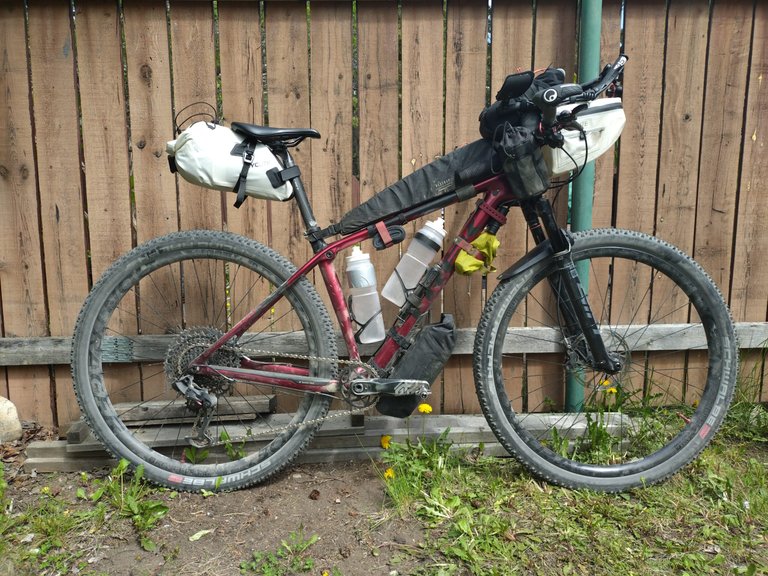
Welcome to the most comprehensive guide to bikepacking bags. The primary aim isn’t to evaluate specific models and brands. We’ll go through all types of bags and their general pros and cons. We’ll clarify what to keep in mind when choosing a particular type. There’s no single ultimate bag that works for everything. It depends a lot on what bike you ride and under what conditions.
Bikepacking bags generally don’t require any special rack to mount. They attach with elastic straps, hook‑and‑loop (Velcro) straps, or frame/fork bolts (if you have them). That said, this evolves over time and some light, modern rack‑based solutions are making a comeback. You definitely won’t cram as much gear into bikepacking bags, so it pays to pack thoughtfully.
You shouldn’t run bag capacity right to the limit—always leave some extra space. At home you’ll pack everything neatly, but on a longer bikepacking adventure you won’t be as tidy. And you might buy something along the way—where will it go?
It’s better to have more smaller bags than one huge one. Your packing will be easier and your items more accessible while riding. You definitely don’t want to dig through deep layers every time you want to put on a jacket. It’s worth having a few smaller bags for your day‑to‑day items.
Watch out whether a bag is truly waterproof, not just water‑resistant.
The goal of bikepacking bags is to give you room for your gear while affecting bike handling and riding feel as little as possible. In this sense, bags that are as close to the frame triangle—or ideally within it—are best.
Now to the individual types of bags:
Saddle bag
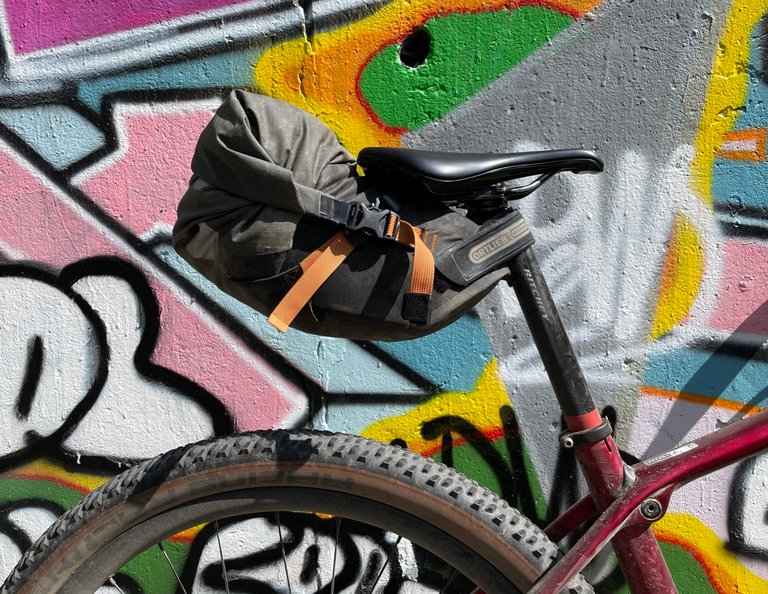
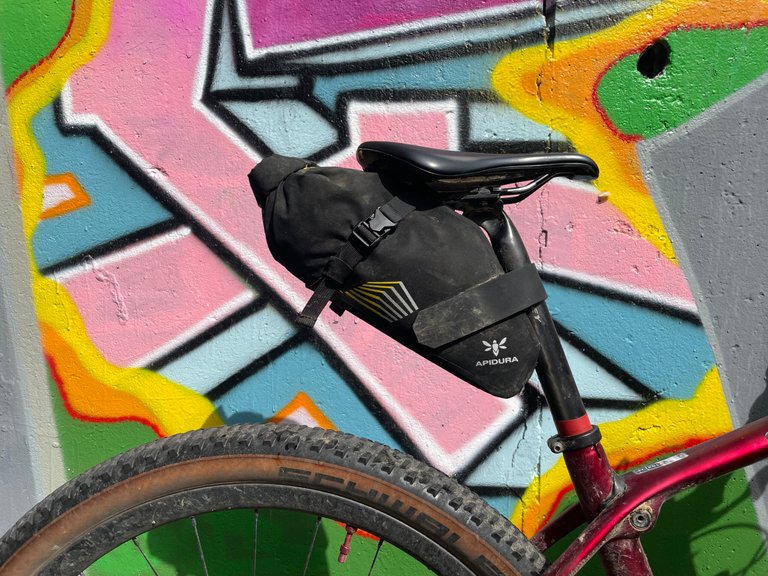
In English “Seat bag” or “Saddle bag”. A saddle bag mounts in the space between the rear wheel, seatpost, and saddle. Very small versions can be mounted only to the saddle rails. Regular‑size bags also strap to the seatpost with one or more Velcro straps.
The bigger the bag and the more you load it, the more it will worsen your bike’s handling. The weight sits far from the center of gravity. Swinging your leg over the saddle gets harder. Beyond a certain size you’ll be limited by clearance between the saddle and tire, or by how high your seatpost is extended. If the bag rubs the tire, you’ll destroy it quickly.
On mountain bikes, also keep in mind that a saddle bag can limit you when shifting your body weight backward.
This bag is best for lighter but bulkier items—sleeping bag or clothing. There’s an article here on Bez Podpory that dives deeper into saddle bags.
What else to consider besides size?
- How the air valve is designed. It’s much easier to pack if you can purge air while rolling it closed.
- Is the bag waterproof?
- Do you have enough clearance between saddle and tire? On full‑suspension bikes, measure at full compression.
- Some bags are two‑piece; you can remove the waterproof drybag and don’t have to pack everything on the bike.
- Some bags include a bungee “spider” to slightly expand capacity.
Handlebar bag
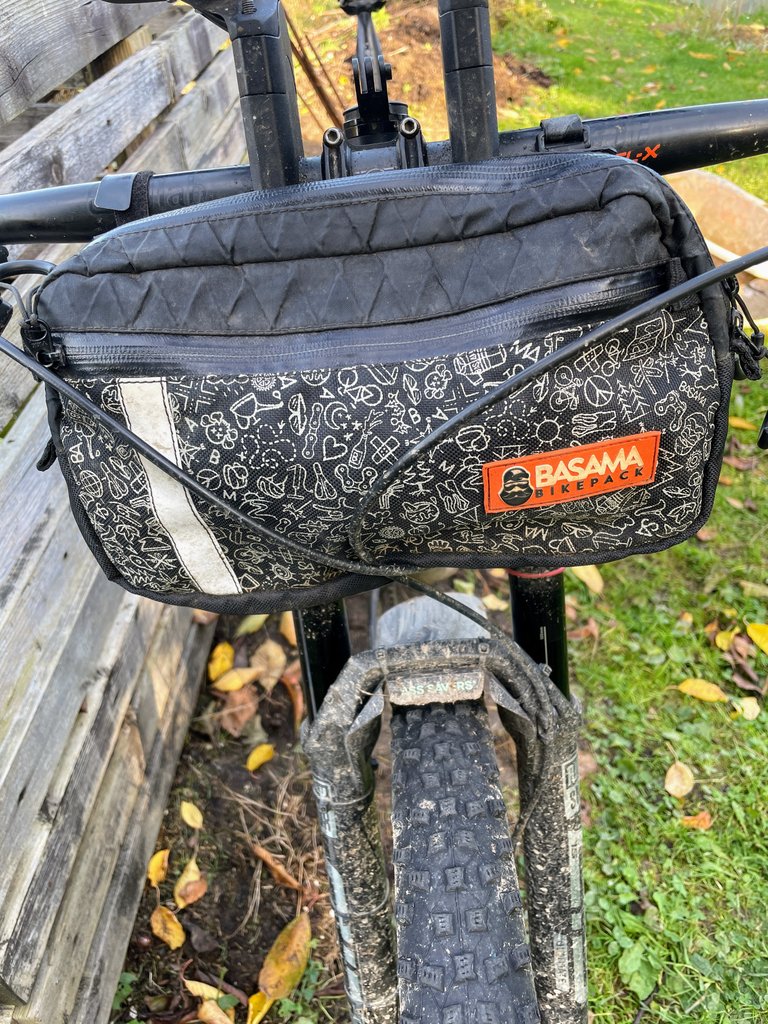
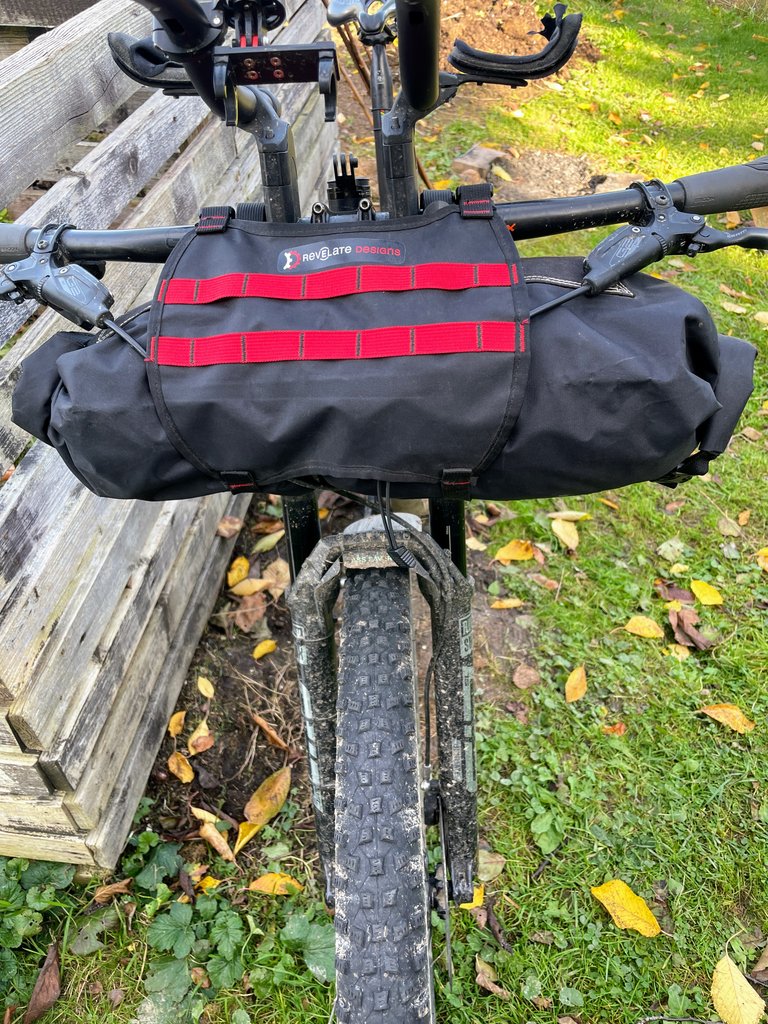
Known as a “Handlebar bag”. There are two basic types:
- Side‑loading
- Front‑loading
Side‑loading bags usually have larger capacity and are waterproof. In some ways they work like a saddle bag. You don’t want heavy items up there because it negatively affects handling. You’ll need more force to steer. Also watch for interference with cables/hoses. They can get in the way during installation, and the more you have, the worse it gets. Beware of pressing them against the frame—over long trips they can abrade, which could be catastrophic, especially for brake lines.
Handlebar bags are more sensitive to even packing. If you have too much weight on one side, the bike can pull that way. This space is great for clothing you put on and take off during the ride. Items are a bit more accessible than in a saddle bag—you don’t need to dismount.
Because of their larger frontal area, these bags can hurt aerodynamics and slow you slightly. On a road bike the effect is more noticeable. With drop bars, available cockpit width also limits you.
There are variants designed specifically for mounting on aerobars.
Front‑loading types tend to be smaller and more often use zippers instead of roll‑top closures. They often lack waterproofing. They work well for smaller items you’ll use while riding, such as food.
What else to consider besides size:
- How will the bag interact with your cables/hoses?
- Is the bag waterproof?
- As with a saddle bag, a removable waterproof drybag is handy.
Frame bag
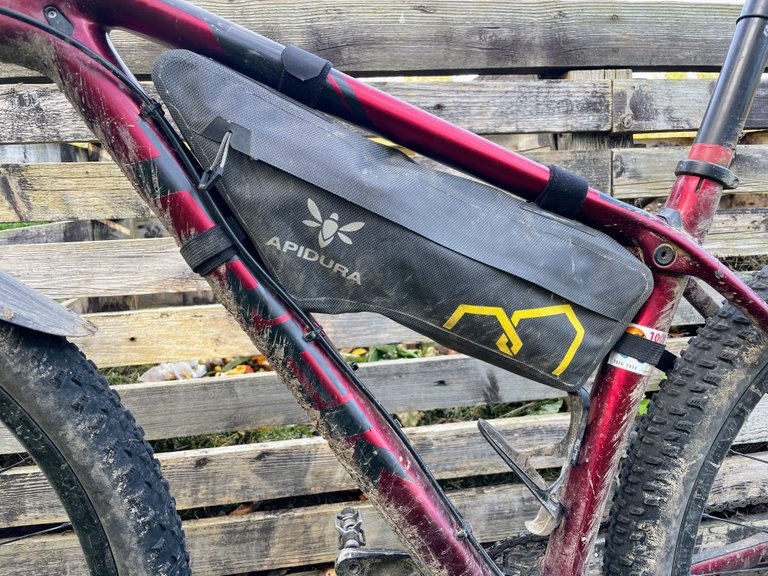
The holy grail of bikepacking bags—the frame bag. Why? Being in the middle of the frame triangle, it’s right at the center of gravity. It’s the best place for heavy items. Of course, you won’t cram your full sleep system in there (unless it’s only an emergency bivy). To avoid interfering with pedaling, you can’t overstuff it.
Since every frame has different geometry, finding an off‑the‑shelf bag that fits beautifully can be hard. The solution is to have one custom‑made. In that case, you’ll fill the space perfectly. With rear suspension you generally can’t fill the entire triangle. In general, mountain bikes have less room in the triangle than gravel or road bikes.
Another disadvantage: you won’t be able to keep bottles inside the frame. You’ll have to move them elsewhere or switch to a different hydration system.
It can also make carrying the bike harder, because grabbing the top tube isn’t as easy.
What to consider?
- Off‑the‑shelf vs. custom‑made.
- Do you want a full‑frame bag? If not, a bottle might still fit.
- Does the bag have multiple compartments for better organization?
- Is the bag waterproof?
Stem bag
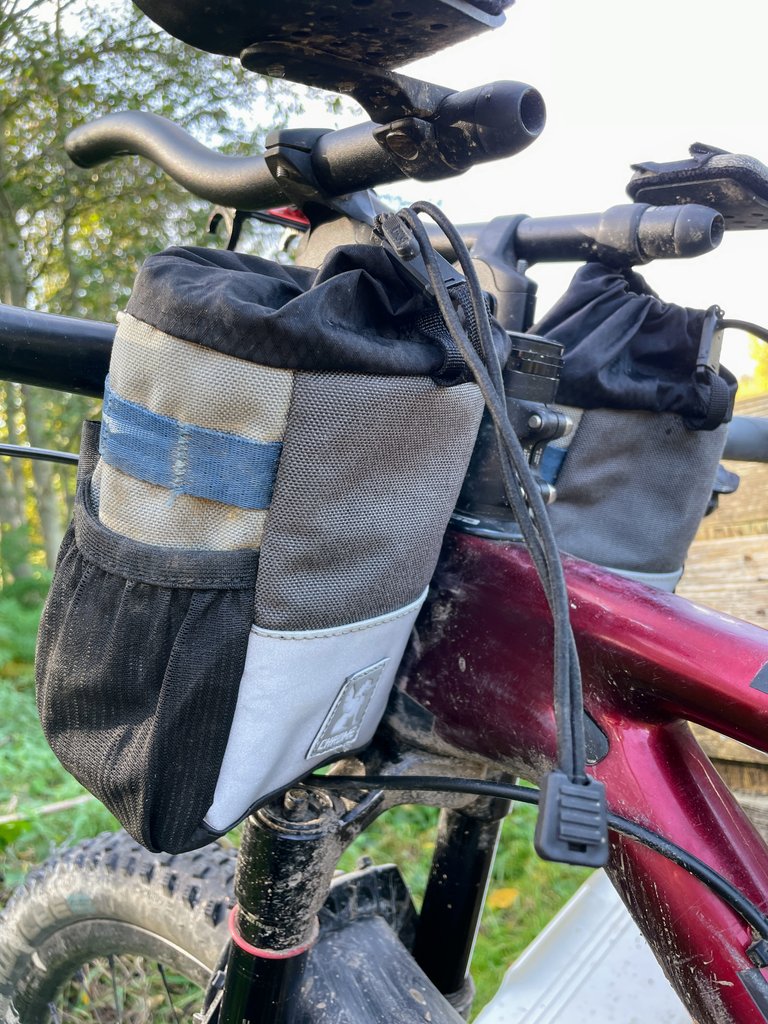
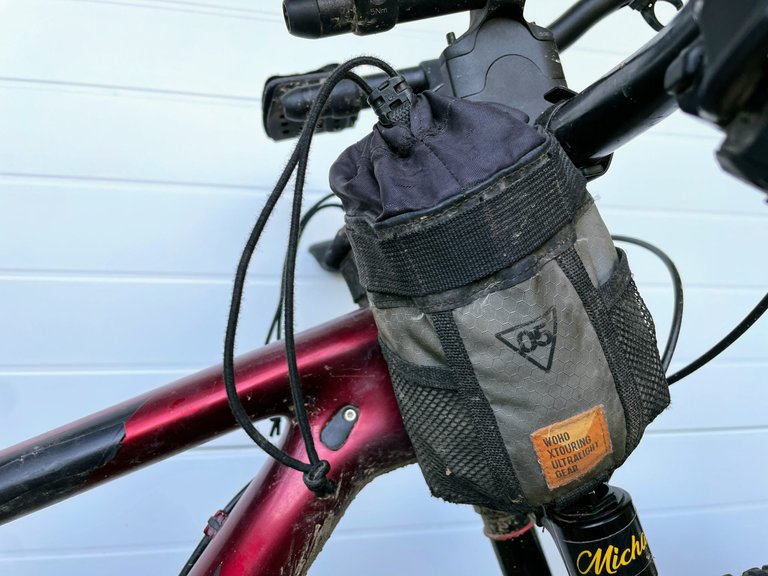
You’ll see these under names like “Stem bag”, “Feed bag”, or “Food pouch”. They don’t hold tons of stuff and they’re not rain‑proof. Their main advantage is that they’re light and easy to access. Grabbing something while riding is no problem. Most often they carry bars or sweets you nibble on. They’re also great for temporarily stashing items you don’t want to put away properly yet… or as a trash pocket for wrappers.
If you use aerobars, the armrests can block access. If you have spacers under the aerobars to raise them, it’s fine. You can also place another small bag between the extensions.
Watch that the bags don’t conflict with side cables/hoses. Weight partly supported by the bars can slightly worsen handling. On the flip side, a stem bag nicely helps prevent the bars from over‑rotating.
If your fork has a lockout, the bag may interfere with it or make access harder. Bags can also get in the way when you’re out of the saddle.
What to consider?
- Does water drain out? A water‑resistant fabric isn’t necessarily better if you carry bars—better if water can pass through and not pool at the bottom.
- Can you open and close it one‑handed?
- Does it have a lower attachment to anchor to the fork for more stability? The more stable, the better.
- Are straps fixed or flexible/modular so you can mount as needed?
Top tube bag
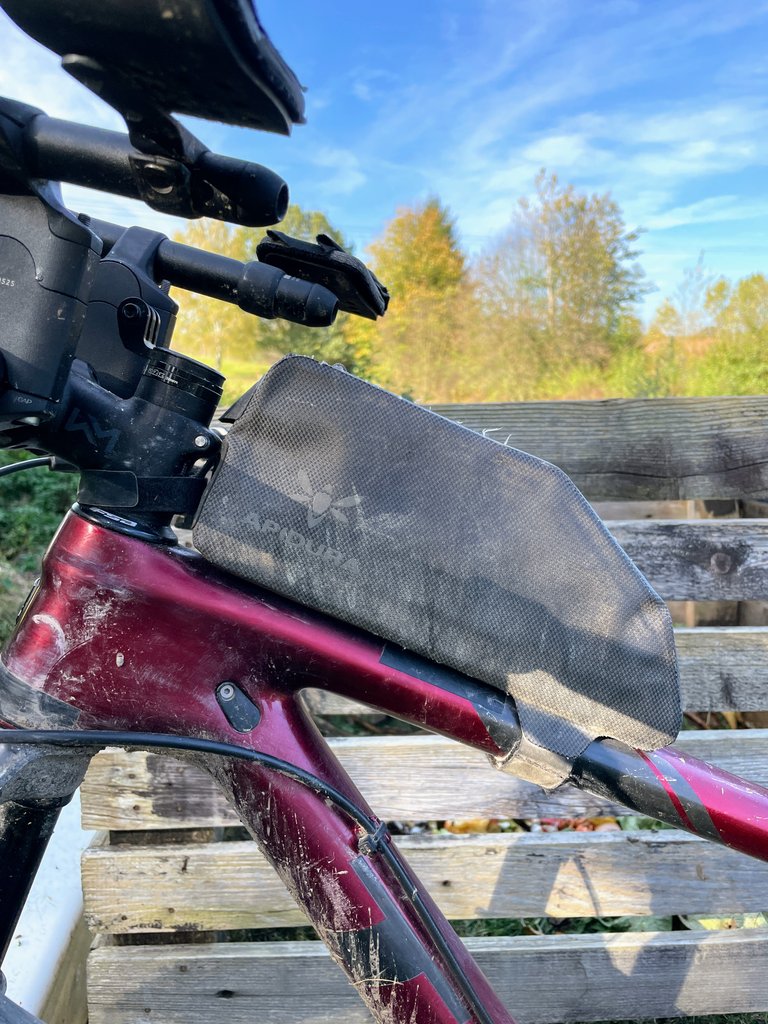
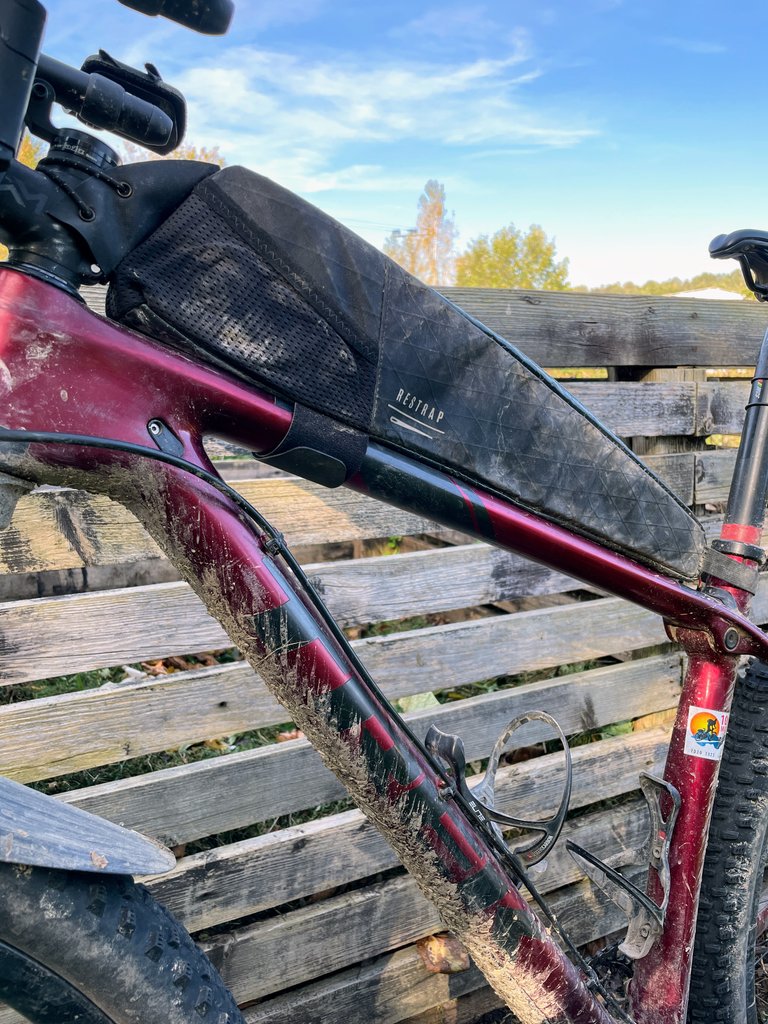
The “Top Tube Bag”. For a long time, these were small—around one liter. Some gravel and road bikes have bolt mounts for them. Later, long variants appeared that fill the space almost to the seat tube.
They’re great for smaller items you want at hand while riding. Most are waterproof, so you can carry electronics. Closures are typically either magnetic or zipper.
Depending on your body, bag, and bike, your knees may brush the bag while pedaling, which can be annoying over time.
Mounted just above the frame triangle, it shouldn’t affect handling or aerodynamics.
What to consider?
- Is the bag waterproof?
- Do you prefer a zipper or magnetic closure?
- Can you organize items inside? Any side pockets?
- Does it have a cable port? Handy if you want to charge your navigation device while riding.
Downtube bag
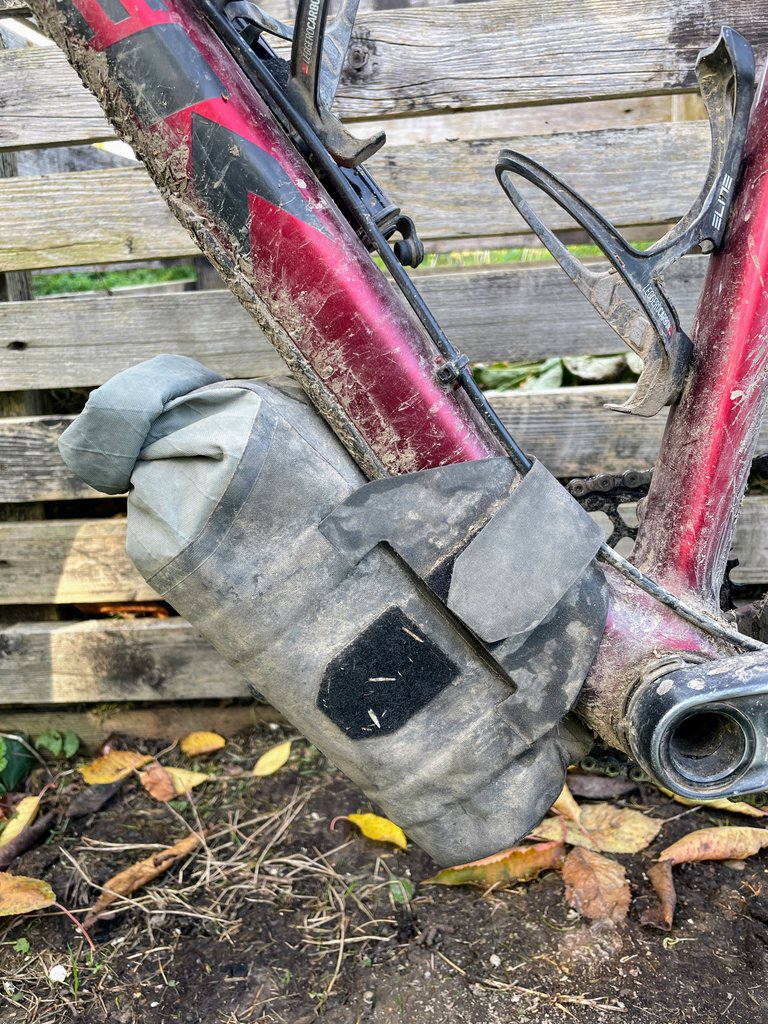
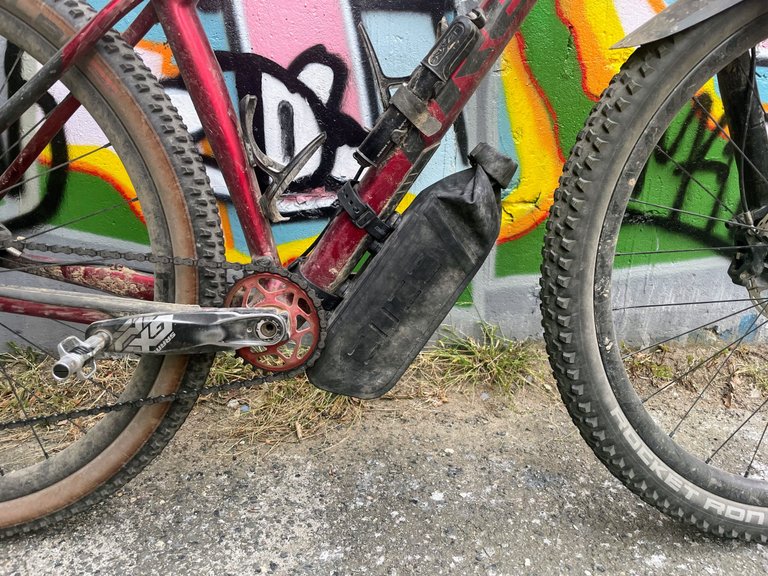
If there’s space for a bag, let’s use it. The “Downtube bag”. Ideal for heavy items you don’t need to access often. Under the frame, the bag doesn’t get in the way and doesn’t affect handling.
The main downside is that it’s exposed to tons of mud if you ride off‑road in all weather. If the bag is waterproof, the contents are protected, of course—but getting into such a filthy bag is not a pleasant experience.
These bags are often long and narrow, so it can be hard to stuff things in. If you have a suspension fork, make sure that even at full compression it won’t touch the front tire.
What to consider?
- Can you comfortably ride with it empty?
- Do you have enough room for it?
Bikepacking bag reviews
Interested in reviews of specific models? Visit the bikepacking bag reviews category on the site.
Published | #Bikepacking
💬 No comments yet
What are your thoughts? 🤔 Feel free to ask any questions 📫